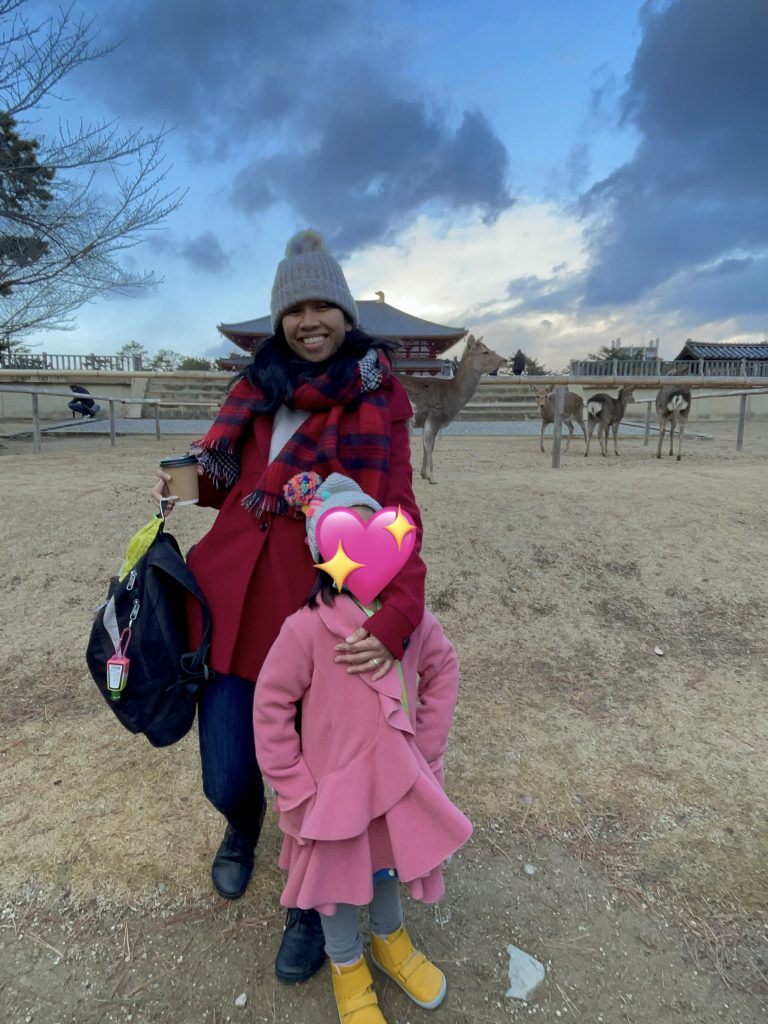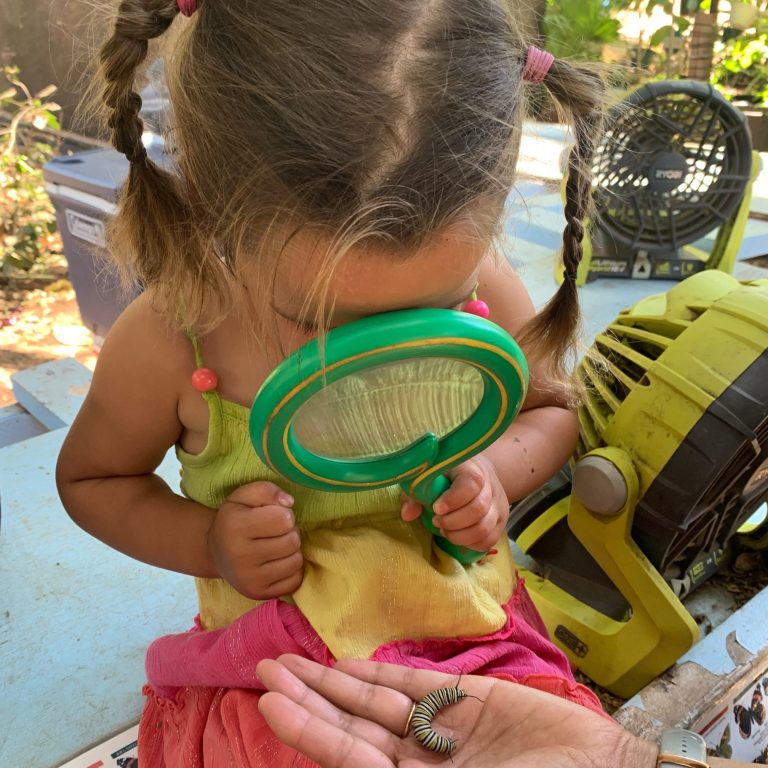Wild deer, an unexpected snow flurry in an enchanting forest, the freshest mochi, and a centuries-old tradition setting a mountain aflame—if you can’t already tell, we had the most magical time in the quaint and natural setting of Nara, Japan. We visited Japan’s former capital during our family’s eight-day visit to Japan (full trip itinerary coming soon) and would be so excited to make a return the next time we’re in the area.
Read on for our experience, tips, and suggested itineraries in this lovely town on Japan’s Honshu island.
Click to jump ahead to
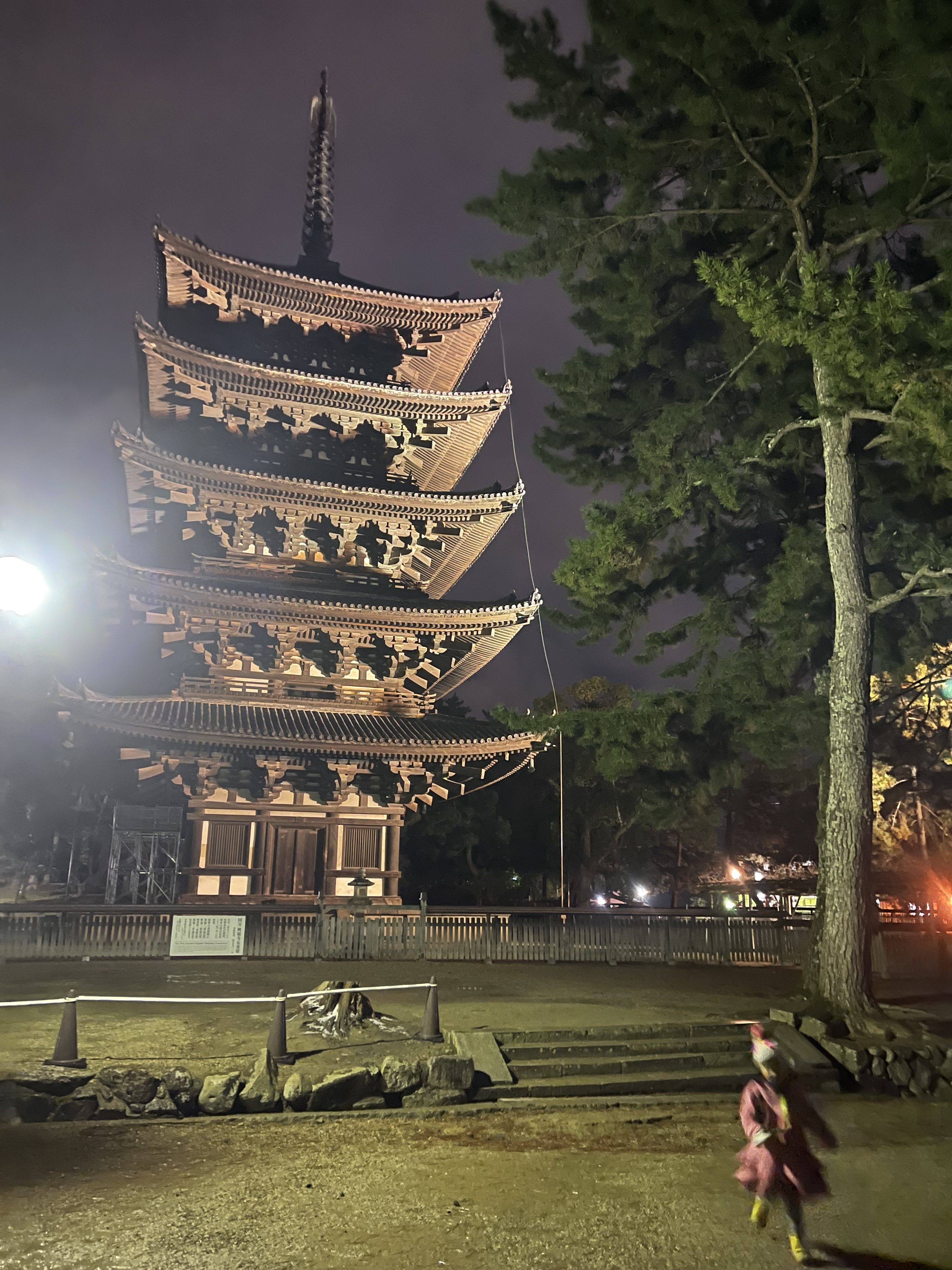
Trip Purpose
Witness the centuries-old Wakakusa Yamayaki, which happened to be timed perfectly with the weekend of our arrival in Japan
About Our Visit
AGE OF THE KIDS: 5 years
LENGTH OF VISIT: 8 hours
TIME OF YEAR: Winter (cold and snowy!)
DAY OF THE WEEK: Saturday
COSTS TO CONSIDER (USD)
- Round-trip train fare from Osaka or Kyoto: ~$20
Add-Ons
- Food: ~$20/person
- Mochi: $2/person
- Rice crakers/deer food: $2
- Souvenirs: ~$20

Top Tips to Make the Most of Your Visit
Before You Go
If your schedule permits, time your visit with a cultural festival, such as Wakakusa Yamayaki in late-January
What We Packed
- Standard diaper bag essentials
- Ergobaby or soft baby carrier, or hiking backpack, if needed
- Light winter gear
- We would’ve done well to bring an umbrella!
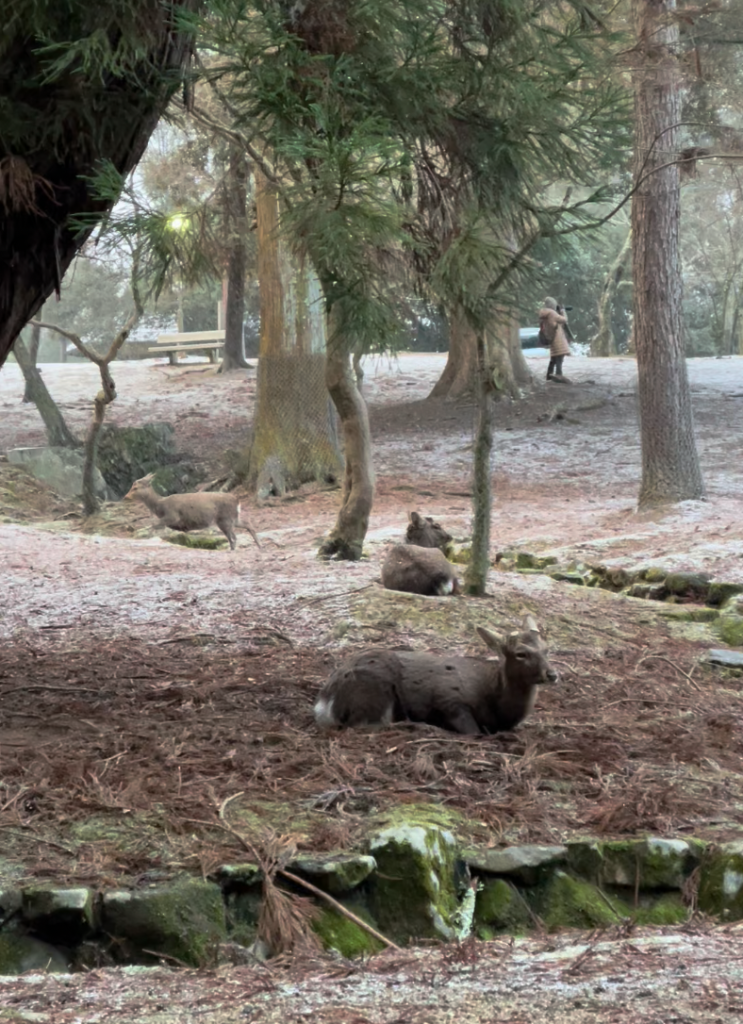
Getting There
We visited Nara as a day-trip from Osaka, and could have easily done so from Kyoto, as well. The one-way train ride from either major city clocks in under one hour and costs about $10 each way. You can take either the JR-West all the way to Nara Station or transfer to the Kintetsu to arrive at the Kintetsu-Nara Station. The latter is slightly closer to Nara Park, but is not covered by the JR Pass.
From Kyoto:
- 50-minute drive
- 30-60-minute train ride
From Osaka:
- 35-minute drive
- 60-minute train ride

Recommended Activities
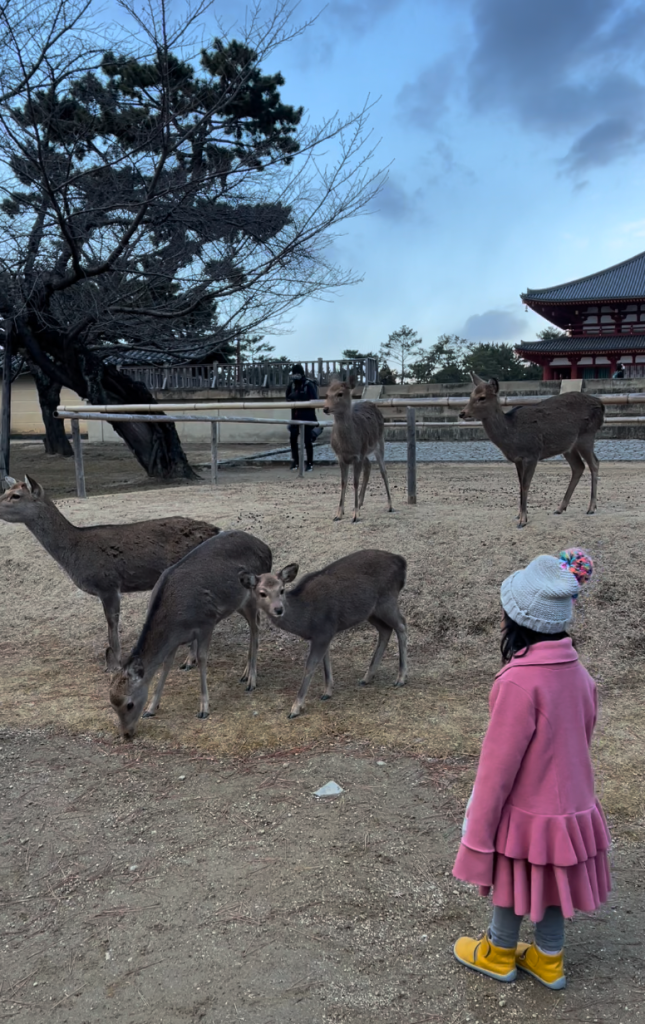
Attend the Wakakusa Yamayaki Festival
Great nighttime cultural activity
~1-4 hours; free
Held annually on the fourth Saturday of January, this festival happened to coincide with our arrival in Japan so we felt very lucky to have the opportunity to attend! Though its origins are disputed (some say it had to do with feuding temples, others say it began with individuals who burned the mountain out of superstition), what’s clear is that the centuries-long-held tradition of Wakakusa Yamayaki is a mainstay for generations to come. This festival attracts locals and out-of-towners alike who descend upon Nara to witness Mt. Wakakusa being set aflame by monks from the local temples; to mark the beginning of spring; and to enjoy an epic fireworks show.
At about 4:45 p.m. during our visit, a procession of monks with torches and blaring horns departed from a pyre at Tobihino and walked through the forest. They stopped at other temples’ pyres to join their fires together (much like the Olympics torch) and eventually landed at the foot of Mt. Wakakusa. Unfortunately for those in attendance that year, a flurry of snow earlier in the afternoon blanketed the landscape with moisture, making the mountain too wet to catch flame.
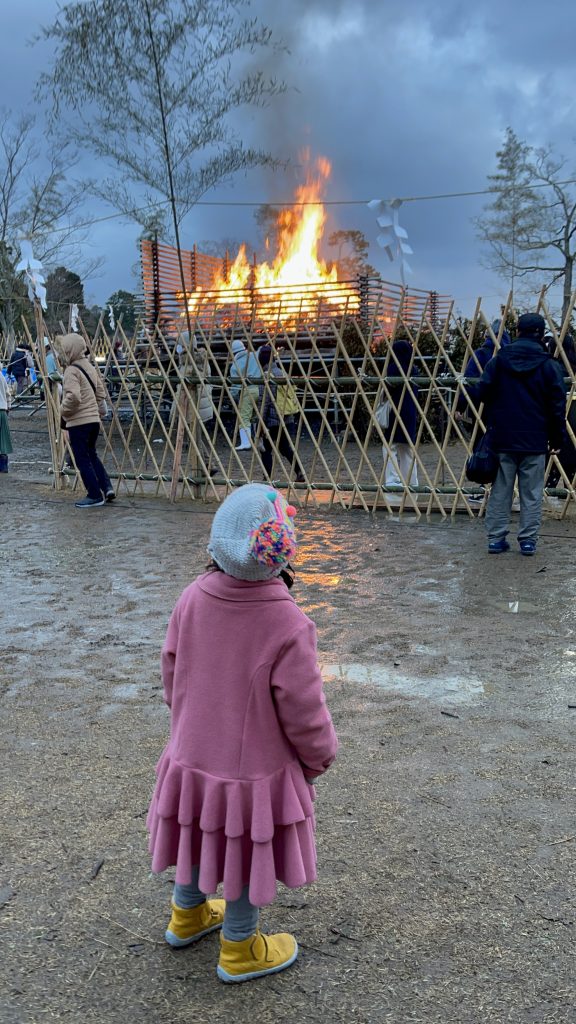
Still, the fireworks show at the end of the festival was awesome and one of the highlights of our entire trip, according to my kindergartener. We felt honored to witness such a culturally significant event, which resumed in 2023 for the first time since the start of the COVID-19 pandemic.
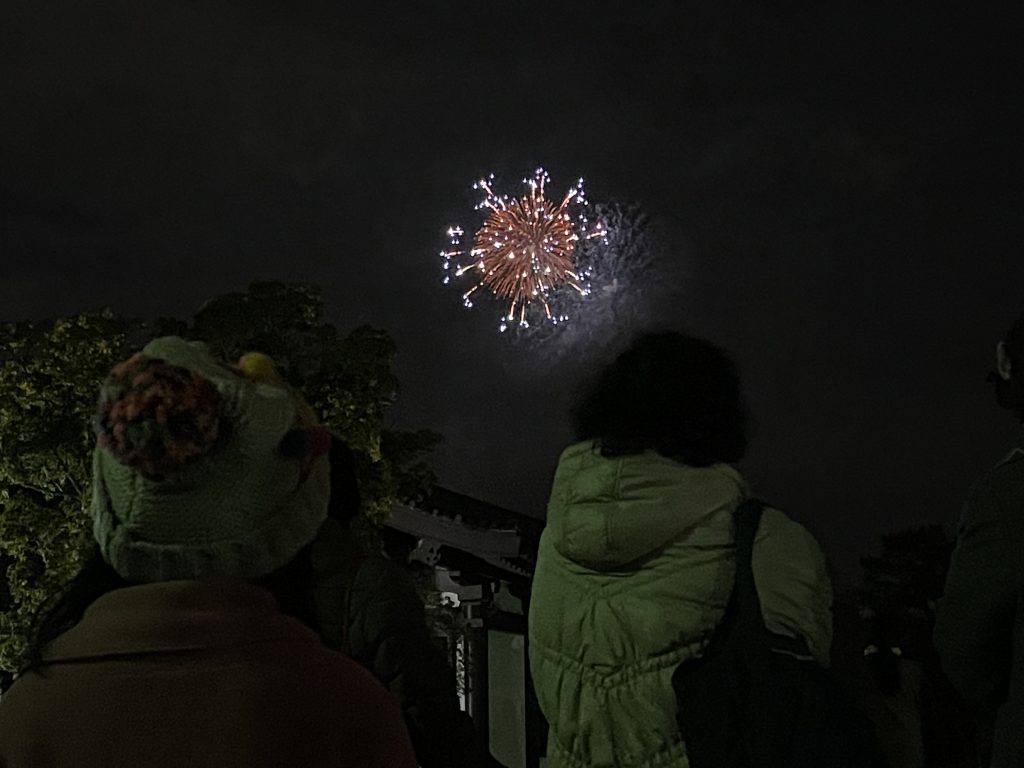
Get Mochi from Nakatanidou
Great for a sweet snack from world-famous mochi-pounders
~30 minutes; $2+
Our family loves mochi, a Japanese dessert made of pounded sweet rice and filled with special sweets like red bean paste or fresh fruit, so we could not pass up a chance to visit Nakatanidou, whose fame precedes them. Before I had even heard of Nara, I had seen the lightning-fast mochi-pounders at Nakatanidou via a YouTube search of “mochi pounding Japan.”
You can’t miss the shop—just follow the big crowd of folks either waiting to purchase or standing on the sidewalk noshing on their fresh mochi. We sadly didn’t catch the pounders on our visit but we loved how their yomogi (Japanese mugwort) mochi was fluffy, soft, and smooth. My little one loved the treat. The red bean inside was the perfect amount of sweetness. Just know that you’ll probably be covered in kinako (roasted soy bean flour) after you’re through!
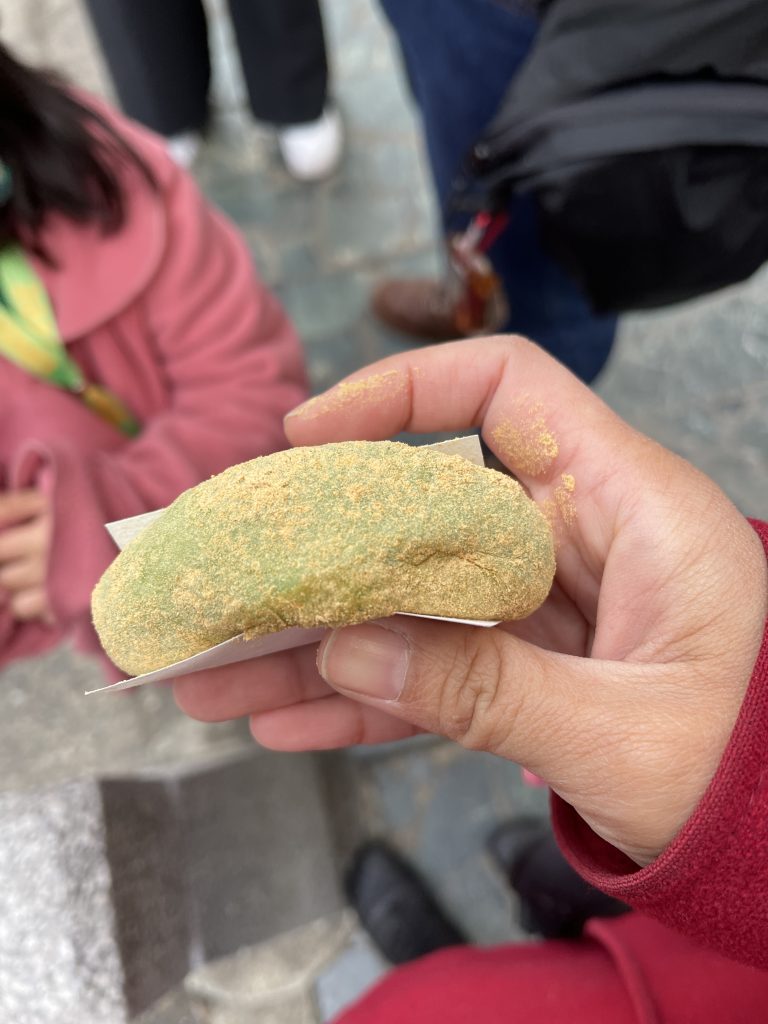
Visit the Local Temples
Great for architecture-lovers and history buffs
~30+ minutes, free
You will pass by Kōfuku-ji Temple (on the UNESCO World Heritage List) and the 15th-century Kōfuku-ji Gojunoto pagoda on the walk up the hill to Nara Park from the Kintetsu-Nara train station. While we didn’t have time to visit the interior of the temple, its grounds served as a beautiful photo backdrop and marked our first wild deer sightings! My child giddily fed the deer with some snacks given to her by an elder.
PRO-TIP There are drink vending machines near the temple’s Southern Round Hall, which came in very clutch at the end of the night when we were freezing and needed something warm to drink and hold onto.
There are a handful of other temples, shrines, and palace remains in Nara that are named on the UNESCO World Heritage site, each with their own unique significance. In a future visit would love to tick off a couple more!
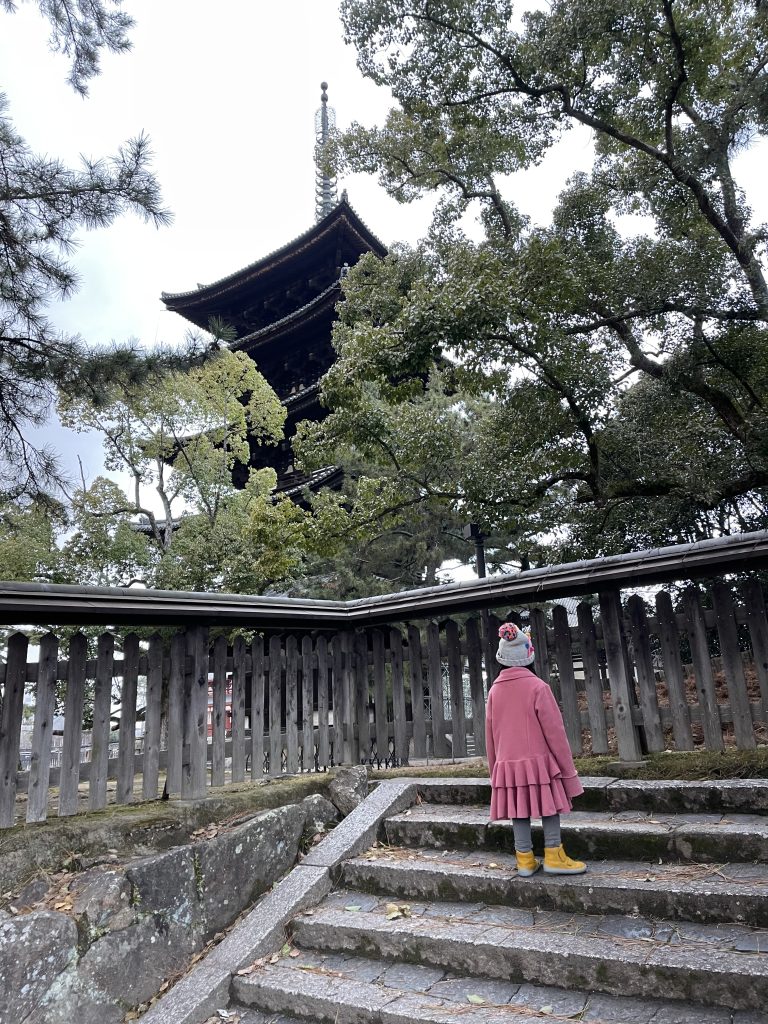
Walk Through Nara Deer Park
Great for outdoor enthusiasts and deer-lovers
~1+ hours, free
Nara Park is a more than 1,200-acre stretch of land that is home to countless wild deer, historic temples, and numerous walking paths that will take you through enchanting forests and landscapes. At various cottages in the park you can enjoy a coffee or buy a pack the senbei rice crackers with which to feed the deer.
It is said that a god named Takemikazuchi came to Nara riding a white deer, so the animals are held in high regard and are considered national natural monuments. They may be fed rice crackers or acorns only, and while they can get somewhat pushy when they see you have either food in your hands, my kid had no problems feeding them. People were feeding the deer straight from their open palms. Some deer may even bow to you (see below)!
There was a flurry of snow as we entered Nara Park and it was magical to watch the white flakes land on the deer and trees and landscape. It felt like a page straight out of Narnia!
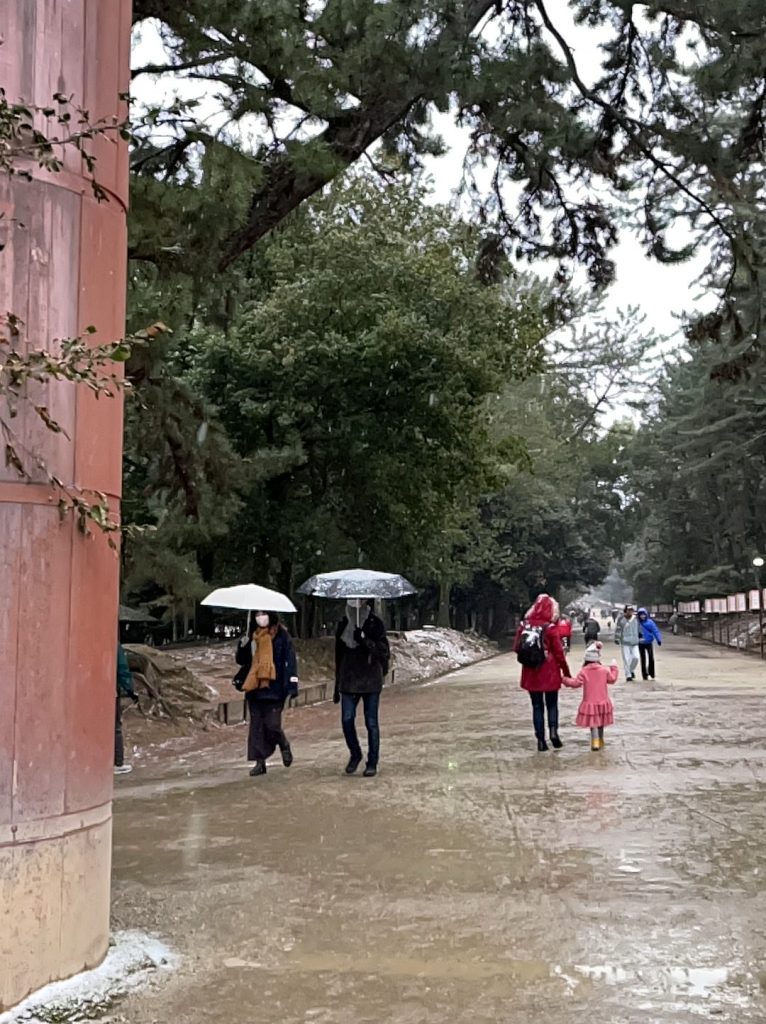
Appreciate All of the Deer Paraphernalia
Great for deer-lovers 🙂
They sure love deer in Nara, which is evident from all the cute deer-themed souvenirs and deer-shaped snacks you’ll find throughout the town. There is even a Nara Deer Support Club! If deers are your thing, dear me, you will have a field day in Nara.
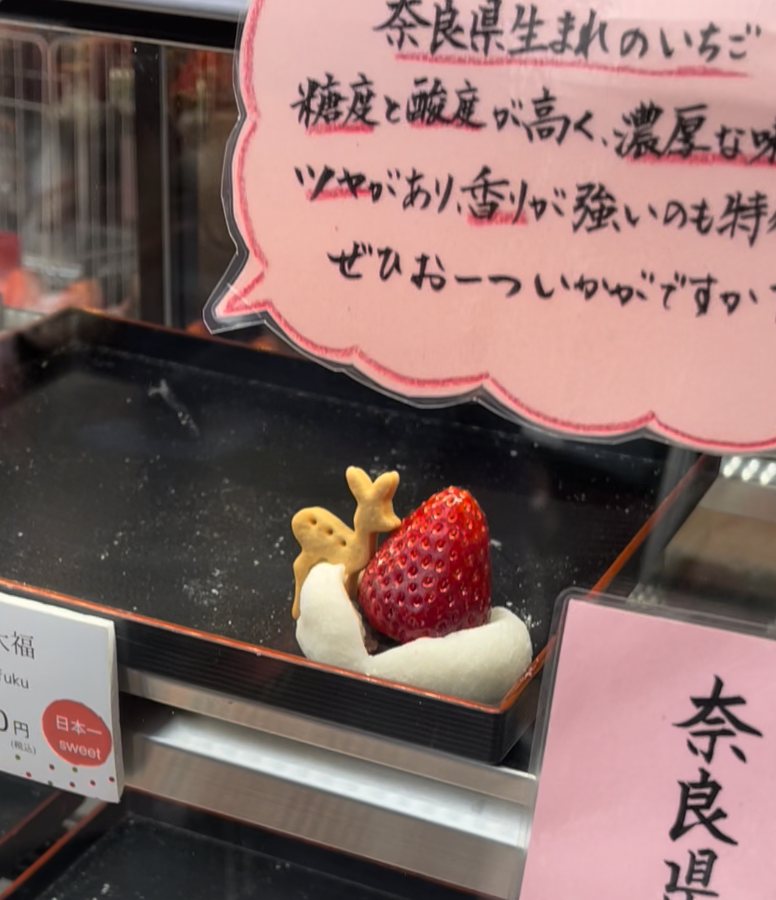
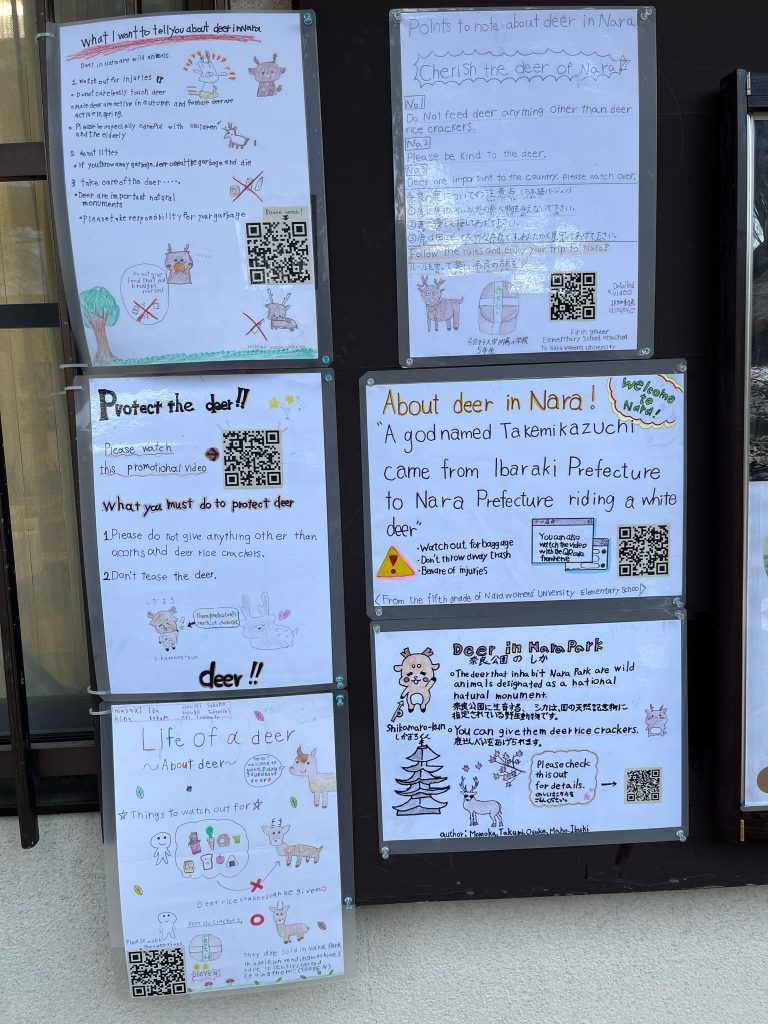
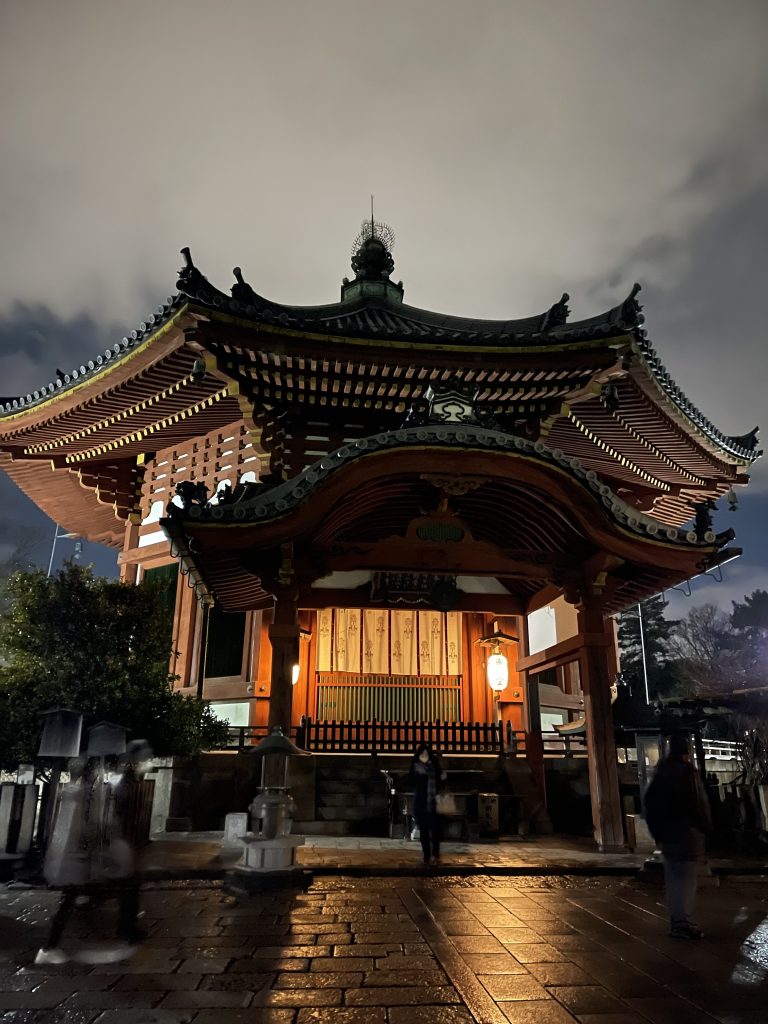
Wishlist for our Next Visit
I hope on our next visit to Nara coincides with a future iteration of the Wakakusa Yamayaki where the mountain actually catches fire 🙂 I’d also enjoy spending more time sitting and enjoying Nara Deer Park, and bowing to the wild deer! In the future I’d love spend at least a whole day or two in Nara.
There was a mix of Japanese people and tourists in Nara, which makes sense given that our visit coincided with Wakakusa Yamayaki. Lots of families were in attendance, despite the cold weather and late evening. It does feel a bit touristy, while at the same time being a charming nature-filled town.
My family had a wonderful experience in Nara and hope we have the opportunity to return in the future.
Angelica (she/her) is of Cebuano(Pilipinx)-descent and was born and raised in Huchiun Ohlone territory (the East Bay Area--pay your Shuumi Land Tax!), where she also now resides with her partner and their toddler. She loves to spend her time sipping on boba and dirty chai lattes (sometimes together), and eating pescetarian goodies at BIPOC-owned cafes and restaurants.
-
Angelicahttps://beautifulbrownadventures.com/author/jellyeatsfishy/
-
Angelicahttps://beautifulbrownadventures.com/author/jellyeatsfishy/
-
Angelicahttps://beautifulbrownadventures.com/author/jellyeatsfishy/
-
Angelicahttps://beautifulbrownadventures.com/author/jellyeatsfishy/
You might also enjoy
 Traveling Tokyo with Kids: 12 Family-Friendly Activities for a 3-Day Itinerary
Traveling Tokyo with Kids: 12 Family-Friendly Activities for a 3-Day Itinerary
 36 Hours in Osaka: What My 5-Year-Old and I Did in the Nation’s Kitchen
36 Hours in Osaka: What My 5-Year-Old and I Did in the Nation’s Kitchen
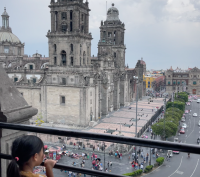 A Family-Friendly Guide to Mexico City: Top 10 Activities with Sample Itineraries
A Family-Friendly Guide to Mexico City: Top 10 Activities with Sample Itineraries
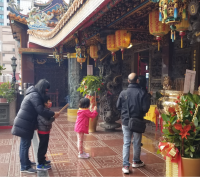 Trip Recap: Visiting Popo’s Final Resting Place in Taiwan with My Six-Year-Old
Trip Recap: Visiting Popo’s Final Resting Place in Taiwan with My Six-Year-Old
 Review: Why Budget-friendly Zipair is Our Family’s Preferred Way to Fly to Tokyo
Review: Why Budget-friendly Zipair is Our Family’s Preferred Way to Fly to Tokyo

